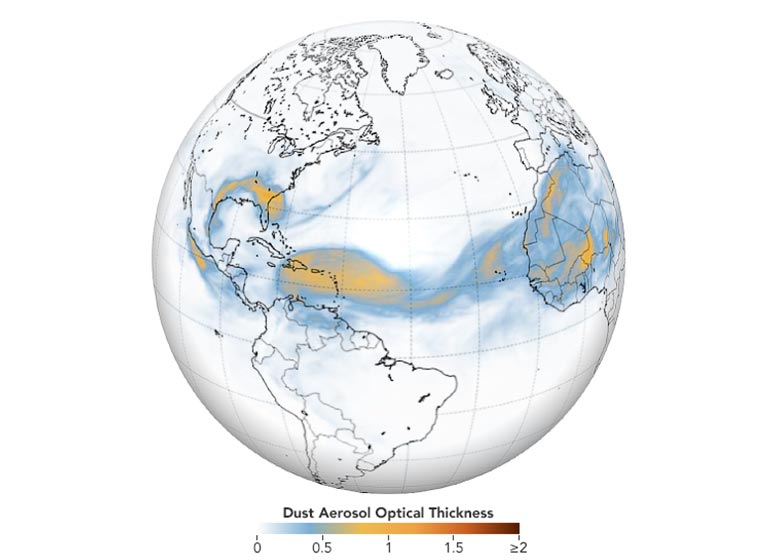
June 27, 2020.
Winds routinely drive clouds of Saharan dust out of West Africa and across the Atlantic Ocean in the summer.
But the intensity and extent of a plume that departed Africa in June 2020 was so great that it had internet meme-makers buzzing about a “Godzilla” dust cloud!
From the International Space Station, NASA astronaut Doug Hurley described the vast ribbon of dust as “amazing.” And as dust blanketed the Caribbean Sea and darkened skies in several states in the U.S.
We flew over this Saharan dust plume today in the west central Atlantic.
One preliminary analysis of aerosol optical depth (AOD) measurements from NASA’s Moderate Resolution Imaging Spectroradiometer (MODIS) sensor showed a greater concentration of dust in the atmosphere over the Atlantic Ocean on June 20 than on any other day since 2003.
The plumes in June 2020 spanned thousands of kilometers.
June 2 – 23, 2020.
The sequence of images above, based on data from NASA’s Goddard Earth Observing System (GEOS) modeling system, shows pulses of Saharan dust at one-week intervals as they made their way across the Atlantic Ocean.
As the plume reached the United States, the Environmental Protection Agency reported on June 27 that levels of fine particulate matter (PM2.5) had risen enough to reach “unhealthy levels” (between 151-200 on the air quality index) in Florida, Texas, and Georgia.
The data in the transect below reveal the height of the dust over the Dominican Republic as observed by the Cloud-Aerosol Lidar with Orthogonal Polarization (CALIOP) instrument on the CALIPSO satellite on June 23, 2020.
Reaching roughly 4 kilometers (2.5 miles), the top of the plume was a bit higher than most; there was also plenty of dust at or below 1 kilometer (0.6 miles).
Infectious disease researchers watch them because dust plumes can be vectors for viral and bacterial diseases.
And climate scientists study dust because big events can absorb enough light to affect Earth’s radiation budget.
Likewise, outbreaks of Saharan dust can play a key role in fertilizing the nutrient-poor soils of the Amazon rainforest in the winter and spring
However, Yu said seasonal wind patterns generally carry most of the dust from summer events north of the Amazon rainforest and into the Caribbean
